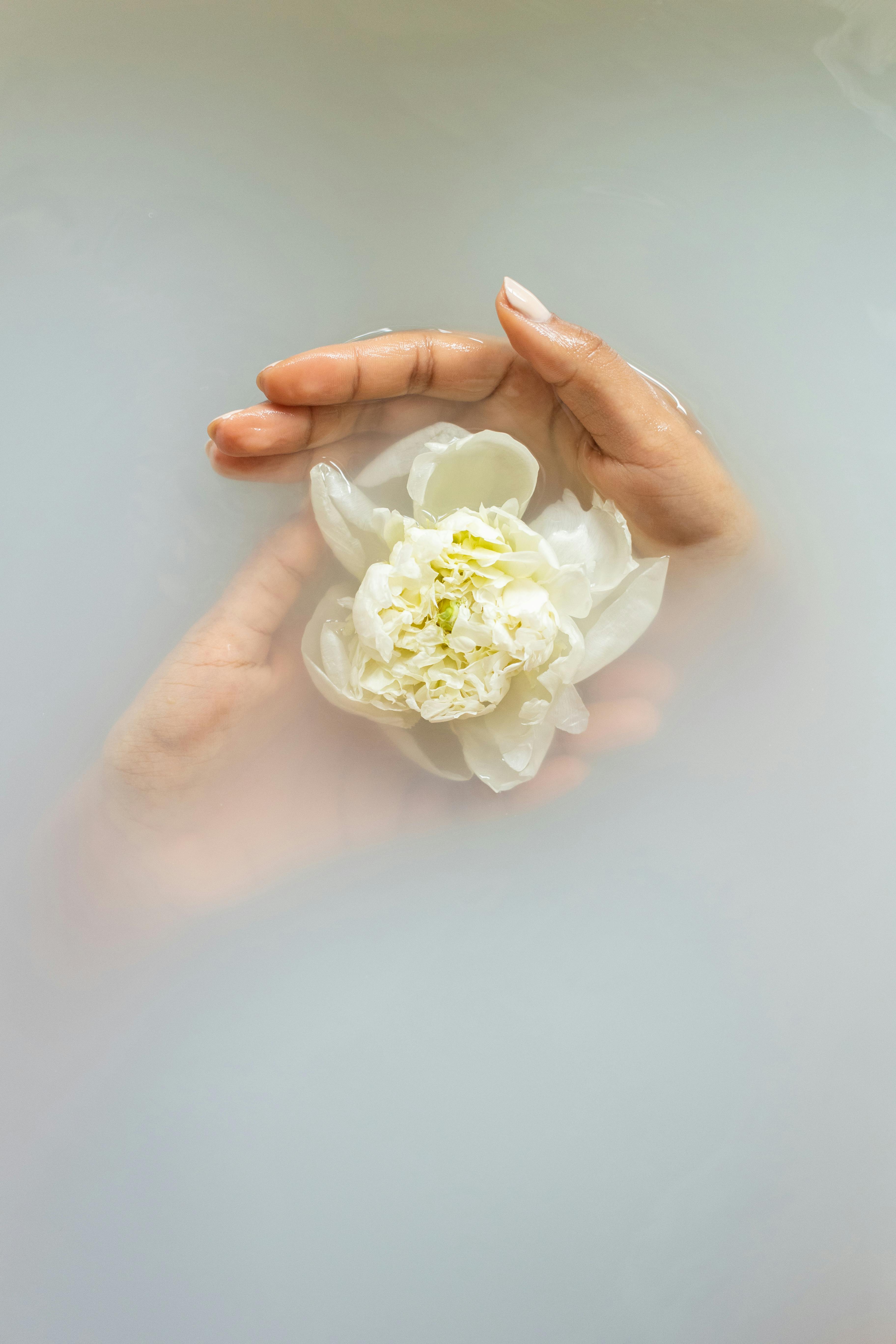Imagine being gently cradled in warm water, feeling weightless and relaxed as a skilled therapist guides your body through a series of fluid movements. This is the essence of Watsu, a unique form of aquatic bodywork that combines elements of shiatsu, dance, and meditation. Developed in the early 1980s by Harold Dull, Watsu harnesses the healing power of water to relieve tension, improve flexibility, and promote a deep sense of tranquility. Whether you’re seeking relief from physical pain or simply crave a blissful, immersive experience, Watsu offers a nurturing embrace for both body and mind.

What is Watsu
Watsu is a unique form of aquatic body therapy that combines elements of massage, stretching, and movement in warm water. It is a gentle and relaxing therapy that aims to promote physical, mental, and emotional well-being. Watsu is performed by a trained practitioner who guides and supports your body through a series of flowing movements and stretches while you float in warm water.
History of Watsu
Watsu was developed in the early 1980s by Harold Dull, a therapist and practitioner of Zen Shiatsu. Inspired by his experiences in warm water, Dull experimented with different techniques and movements, eventually creating the foundations of Watsu. He combined the principles of Zen Shiatsu, Chinese medicine, and elements of dance and yoga to form this unique therapy. Over the years, Watsu has gained popularity and recognition worldwide.
Definition of Watsu
Watsu is often described as the “dance of water” as it mimics the natural flowing movements of water. The word “Watsu” itself is a combination of “water” and “shiatsu,” emphasizing the connection between the therapy and water. It incorporates principles of zen shiatsu, stretches, and gentle movements to create a deeply relaxing and therapeutic experience. Watsu is typically performed in warm water, allowing your body to be fully supported and allowing for greater mobility and flexibility.
Benefits of Watsu
Watsu offers a wide range of benefits for both the body and mind. Through the combination of gentle stretches, movements, and massage techniques, it promotes deep relaxation, pain relief, and emotional well-being.
Physical Benefits
The warm water used in Watsu helps to relax the muscles and improve circulation, which can result in pain relief and reduced muscle tension. The gentle stretches and movements can increase flexibility and joint mobility, helping to improve range of motion. The buoyancy of the water also reduces the impact on the joints, making Watsu an effective therapy for those with musculoskeletal issues such as arthritis or chronic pain.
Mental and Emotional Benefits
Watsu is not just a physical therapy; it also provides numerous mental and emotional benefits. The warm water and gentle movements create a sense of calmness and serenity, promoting relaxation and stress reduction. The rhythmic movements and the nurturing support from the practitioner can help release emotional tension and promote a sense of trust and connection. Watsu is often described as a deeply meditative experience that allows for self-reflection and emotional healing.
Process of Watsu
Watsu typically consists of three main phases: preparation, the session itself, and the after-session care. Each phase plays an essential role in enhancing the effectiveness and safety of the therapy.
Preparation
Before the session, the practitioner will typically assess your needs and any specific concerns or goals you may have. They will discuss the therapy process and answer any questions you may have. The water is heated to a comfortable temperature, usually between 92°F and 96°F, to promote relaxation and maintain body warmth. You’ll be guided through gentle stretches and movements to prepare your body for the session. The practitioner will also ensure the pool or water environment is safe and suitable for the therapy.
During the Session
During the session, you’ll be supported by the practitioner in warm water, usually in a specially designed pool. Gentle movements and stretches, combined with massage techniques and body support, will be performed to meet your specific needs. The practitioner may hold and cradle your body as they guide you through the flowing movements, creating a sense of weightlessness and freedom in the water. The session is typically conducted in a quiet and serene environment to enhance relaxation and mindfulness.
After the Session
After the session, it is important to allow yourself time to rest and integrate the experience. The warmth and relaxation from the therapy may continue to be felt for hours or even days after the session. It is recommended to drink plenty of water to stay hydrated and to listen to your body’s needs. Some individuals may experience emotional releases or changes in energy levels, so it is essential to give yourself space for self-care and reflection.
Equipment Used in Watsu
To perform Watsu, certain equipment is required to ensure a safe and effective experience.
Pool or Warm Water
Watsu is typically performed in a pool or warm water environment. The water temperature is carefully maintained to provide optimal relaxation and comfort. The warm water helps to relax the muscles and promote a sense of buoyancy, making movements and stretches easier and more gentle on the body.
Floating Support
Floating support is used during Watsu to provide buoyancy and support for your body. Various inflatable devices, such as water noodles, floats, or specially designed flotation devices, may be used to assist the practitioner in supporting different parts of your body while allowing you to float comfortably in the water.
Additional Props
In some cases, additional props may be used during Watsu to enhance the therapy. This can include water pillows or foam mats to provide extra support and cushioning. These props are used to create a more comfortable and relaxing experience, allowing you to fully surrender to the healing benefits of the warm water and gentle movements.

Who Can Benefit from Watsu
Watsu can benefit a wide range of individuals, regardless of age or physical condition.
Athletes
Athletes can benefit from Watsu as it can help alleviate muscle soreness, reduce the risk of injury, and promote faster recovery. The gentle stretches and movements in warm water can improve flexibility, enhance joint mobility, and help release tension in the muscles. Watsu also provides a soothing and relaxing experience, which can aid in mental and emotional recovery from intense training or competition.
Pregnant Women
Pregnant women can find relief and relaxation through Watsu. The warm water and gentle support provided by the practitioner can alleviate the physical discomforts associated with pregnancy, such as back pain and swollen feet. Watsu also provides a sense of weightlessness and support, allowing pregnant women to relax and connect with their body and baby.
Elderly Individuals
Watsu is a gentle and safe therapy for elderly individuals. The warm water and supportive environment can help reduce joint pain, increase mobility, and improve balance. The gentle stretches and movements can help maintain or improve flexibility, allowing for greater ease of movement. Watsu also provides a nurturing and calming experience, which can help reduce anxiety and enhance overall well-being.
People with Chronic Pain or Disabilities
Watsu can be particularly beneficial for individuals with chronic pain or disabilities. The warm water supports the body, reducing the pressure on joints and minimizing pain. The gentle stretches and movements can improve flexibility and range of motion, providing relief from stiffness and discomfort. Watsu also offers a sense of emotional support and connection, which can help individuals cope with the challenges of living with chronic pain or disabilities.
Watsu Compared to Other Water Therapies
While Watsu is a unique therapy, it shares some similarities with other water-based therapies.
Aqua Yoga
Aqua Yoga combines elements of traditional yoga with the buoyancy and support of water. Like Watsu, Aqua Yoga takes advantage of the water’s buoyancy to reduce the impact on the joints and improve flexibility and range of motion. However, Watsu is more guided and hands-on, with the practitioner providing physical support and flowing movements. Aqua Yoga, on the other hand, focuses more on body postures and breathing exercises, with less direct physical support from the instructor.
Water Dance
Water Dance is another form of aquatic body therapy that incorporates dance-like movements and stretches in warm water. Similar to Watsu, Water Dance aims to promote relaxation, body awareness, and emotional well-being. However, Water Dance emphasizes the expressive and artistic aspects of movement in water, incorporating elements of dance and creative expression. Watsu, on the other hand, focuses more on the therapeutic and nurturing aspects, with the practitioner guiding and supporting the client through the session.

Finding a Watsu Practitioner
When looking for a Watsu practitioner, it is important to consider their credentials, training, and experience.
Credentials and Training
A qualified Watsu practitioner should have completed a recognized training program specific to Watsu. Look for practitioners who have certifications from reputable organizations and who have undergone extensive training in water therapy and bodywork. Check for any additional certifications or qualifications that may indicate a higher level of expertise or specialization.
Reviews and Recommendations
Reading reviews and testimonials from previous clients can provide valuable insights into the skills and effectiveness of a Watsu practitioner. Look for feedback on their professionalism, communication skills, and the overall quality of the therapy experience. Personal recommendations from friends, family, or healthcare professionals can also be helpful in finding a trusted and experienced Watsu practitioner.
Safety Precautions for Watsu
While Watsu is generally considered safe, certain precautions should be taken to ensure a safe and comfortable experience.
Water Safety
Ensure that the water environment, such as a pool or therapy center, meets safety standards and regulations. The pool should be clean, well-maintained, and properly sanitized. It is important to follow any guidelines provided by the Watsu practitioner regarding entering and exiting the pool and any other safety protocols.
Medical Considerations
Before participating in Watsu, it is important to discuss any health concerns or conditions with your healthcare provider. Watsu may not be suitable for everyone, especially individuals with certain medical conditions or injuries. Pregnant women should consult with their healthcare provider to determine if Watsu is appropriate during pregnancy. The Watsu practitioner should also be informed of any health conditions or concerns to ensure a safe and tailored therapy session.
Research and Evidence for Watsu
While there is limited scientific research specifically on Watsu, anecdotal evidence and case studies suggest its effectiveness in promoting relaxation, pain relief, and emotional well-being. The gentle movements, warm water, and supportive environment are believed to have positive physiological and psychological effects. However, more research is needed to further understand the specific mechanisms and benefits of Watsu.
Conclusion
Watsu offers a unique and transformative experience that combines the therapeutic benefits of warm water, gentle stretches, and flowing movements. The physical, mental, and emotional benefits of Watsu make it a versatile therapy suitable for a wide range of individuals. Whether you’re an athlete aiming to enhance recovery, a pregnant woman seeking relaxation, an elderly individual wanting to improve mobility, or someone living with chronic pain or disabilities, Watsu can provide profound healing and well-being. When choosing a Watsu practitioner, consider their credentials, training, and reviews to find a trusted professional who can guide you through this immersive and rejuvenating therapy.
